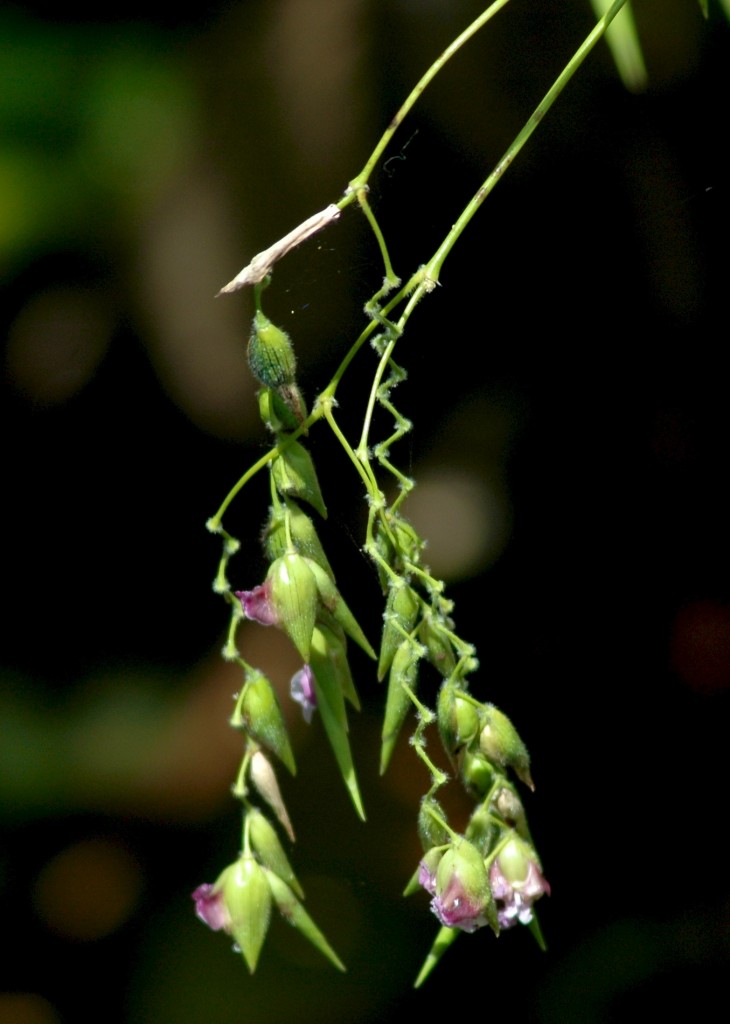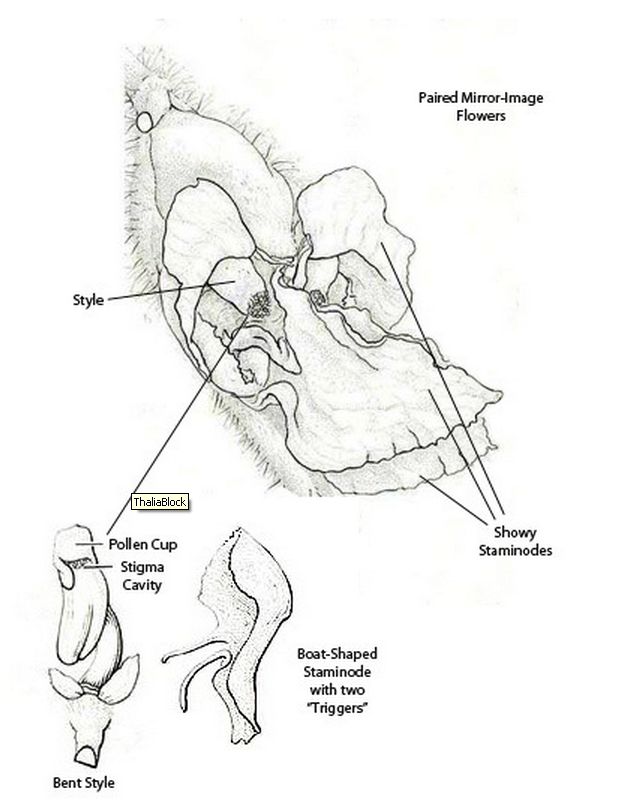Alligator flag is a very common sight to birders in Palm Beach County, because it appears in abundance at two of our favorite wetland areas: the boardwalks at Wakodahatchee and Green Cay (where I’ll be leading a birdwalk this Saturday).
Thalia geniculata, as it’s known to botanists, is a a tall (up to 10 ft or more at the nutrient-rich waters of these two created wetlands) plant with a long flower stem growing up from a cluster of basal leaves. Its roots are quite strong—it’s in the Marantaceae, or arrowroot family, which is known for the big starchy rhizomes in its underground root systems.
This was a fairly important food plant for the Seminoles: they ate the fresh roots, the flowers, rhizomes, and stem bases. They used the large leaves (up to two feet long and over half a foot wide) to wrap food for cooking—according to Dan Austin (2009), “Cornbread dough was mixed with meat and rendered fat, and then boiled in the leaf, like a tamale, but the Miccosukee call it paluee.”
The stems are bent “like a knee” (whence the Latin specific epithet, geniculata). The purple and white flowers are quite pretty, hanging down from that zizgaggy stem:

Like all plants in this family, alligator flag possesses an unusual, “explosive” pollination mechanism. The pollen-bearing bits of the plant (the style) is buried inside the showy “flowery” parts (which are not petals in this plant, but stamens). And, although you can’t see it in the snapshot above, each of these “flowers” has two little “triggers” in it that, when a bee or hummingbird or other potential pollinator brushes up against one, releases the style in a manner similar to the workings of a rat trap. (The traps in the visible flowers above appear to have been sprung already.)
Here is a drawing from a botanical article that explains the mechanism:

As George Rogers over at Treasure Coast Natives describes it,
When the style snaps up and inward, first the stigma scoop scrapes across the bee’s tummy removing any pollen it has brought from a different flower. Then a nanosecond later in the same snap the pollen-bearing cup brushes new pollen onto the bee. The snap no doubt kicks out the dismayed bee, and closes off the entrance to the flower, which has no further need for visitation.
I’m looking forward to trying this out next time I run across this plant on the boardwalk!
Etymological note: Thalia is, of course, the name of the muse of comedy, and geniculata, as explained above, means “with knees.”
References
Austin, D. 2009. Wetlands Plant Guide: A Pocket Guide to the Common Plants of Southern Florida’s Wetlands Community. Gumbo Limbo Nature Center.
Rogers, G. 1984. The Zingiberales (Cannaceae, Marantaceae, and Zingiberaceae) in the Southeastern United States. J. Arnold Arb. 65: 5-55.

What is the bloom time for this plant?
They are blooming right now here in Miramar, Broward County, FL
My alligator plant continues to be visited by a dragon fly every morning. He eats from the top stem. The stem is now hollow and dead. Can anyone tell me why?